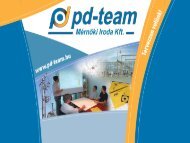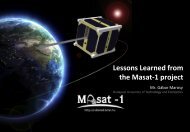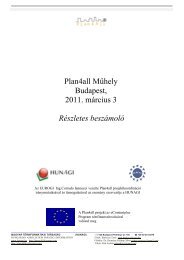Table of Contents - HUNAGI
Table of Contents - HUNAGI
Table of Contents - HUNAGI
Create successful ePaper yourself
Turn your PDF publications into a flip-book with our unique Google optimized e-Paper software.
TAIGA<br />
Traffic and Atmospheric Information for General Aviation<br />
Alaska <strong>of</strong>fers a combination <strong>of</strong> difficult flying conditions and a heavy dependence upon<br />
aviation to support its way <strong>of</strong> life. The result is a sobering set <strong>of</strong> statistics describing a<br />
disproportionate number <strong>of</strong> aviation accidents and fatalities compared to the lower 48 states.<br />
TAIGA is a joint venture between NASA Ames Research Center and the State <strong>of</strong> Alaska to<br />
help pilots make better decisions before and during flight. We will accomplish this by<br />
building a system customized to the needs <strong>of</strong> Alaskan flights. This involves building<br />
communication systems, collecting appropriate data, delivering data to the cockpit, and<br />
visualizing that data in a useful way. For this last goal, we will use the Android platform and<br />
NASA World Wind. The data in question will include weather, traffic, and volcanic activity<br />
amongst others.<br />
We have developed an initial desktop<br />
demonstration <strong>of</strong> the visualization to<br />
appear on an Android tablet. Work<br />
has begun porting World Wind to the<br />
Android platform.<br />
The code resulting from this work<br />
will be made available as open<br />
source. It is hoped this will spur<br />
further Android/World Wind projects<br />
in the future.<br />
The most dangerous work site in Alaska is a<br />
small plane and the fatality rate for Alaska<br />
pilots (General Aviation & Commercial)<br />
is five times greater than the rate for all<br />
US pilots.<br />
- Alaska Aviation Safety Project citing FAA statistics<br />
To reduce occupational fatalities resulting<br />
from aircraft crashes in the state, safety<br />
interventions should focus on providing<br />
weather and other flight information to<br />
increase pilots’ situational awareness… and<br />
expanding the infrastructure used by pilots<br />
to fly by instruments.<br />
- CDC report on Alaskan occupational fatalities<br />
Contact Joseph.L.Rios@nasa.gov for more information






